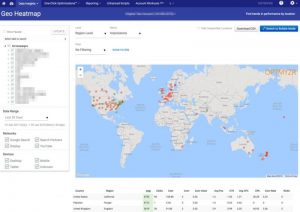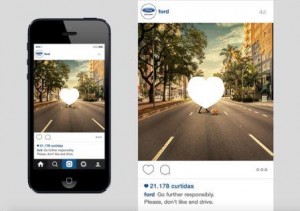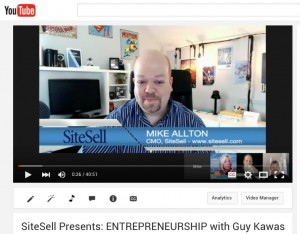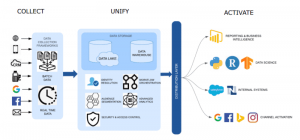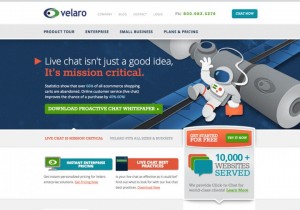— August 2, 2019
Split testing or A/B testing is a popular marketing tactic where businesses will change one or more variable their campaign for some of their users. In other words, consumers are exposed to two advertisements that look similar, except for the variable that was changed.
The purpose of split testing is to increase conversions and sales by fine-tuning your marketing campaign by testing numerous variables over time. After rigorous testing, you’ll be able to determine what part of your ad marketing strategy is working, and where there is room for improvement.
Social media and on-site advertisements are the most common platforms to perform A/B testing. We are going to look at several ways you can tweak your marketing ads with split tests for a significant boost in revenue and subscribers.
Create a Hypothesis
The first thing you’ll want to do when you start split testing campaigns is your hypothesis. In other words, it’s essential to understand why you want to create a split version of your campaign. A good theory will come from your Google Analytics metrics and knowledge of your customer personas.
Let’s say you have a call to action (CTA) button that has a low conversion rate. Changing the button requires you to look at your current website design and think about color psychology. You should also compare data you may have obtained on how color has impacted the conversion rate of another page.
You can then create a hypothesis that the reason your conversation rate is low on that page is due to the CTA not standing out against the background of the advertisement. Now you’ll create a split test where you use a different, contrasting CTA color box. After making the split test, you must allow some time to pass before coming to a conclusion based on your theory. Here’s an example of a split testing using CTA color:
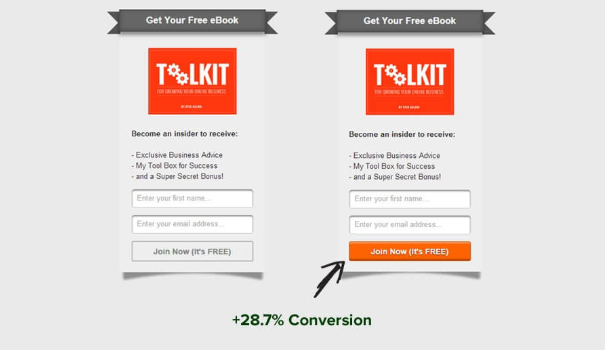
The orange CTA is more prominent and could catch the attention of visitors who would otherwise scan right past it. When creating a hypothesis, it’s vital that you learn from each experiment and continue testing to confirm the accuracy of your theory.
Test Various Aspects of Your Ads
Another great way to start A/B testing is to experiment with your marketing offer. Your offer will vary depending on your niche and marketing goals. For instance, if you want more readers on your email list, you could offer a free ebook in exchange for subscribing. Similarly, if your goal is to get more sales, you may want to provide a 10 percent off coupon for new subscribers.
Depending on the type of business you operate, you could swap out the ebook for a mini-seminar. You could also turn the 10 percent discount into a promotional contest where subscribers could win between 5-25 percent off. While the change may seem small, they can have a considerable impact on your conversion rate.
Form length is another excellent area of opportunity for A/B testing. When a consumer clicks on your advertisement, they will likely have to enter a few details to confirm their subscription. It turns out that length can have a significant impact on conversions. Research shows that 27 percent of people abandon forms because they think they’re too long. Removing a single question from your opt-in page can make a difference in the growth of your email list.
Split Test on Social Media
There are a shocking number of marketers who only use split tests on their website. There are no doubt benefits to A/B testing on your website, but social media can teach you much more about consumers as a whole.
Every social media website is a little different, so for this example, we are going to look at one of the most popular platforms, Facebook. The social media giant has 2.41 billion monthly active users, which should get marketers very excited for split testing.
Facebook allows you to create targeted facebook audiences for your advertisements. You’ll input some basic information about your target audience, and you can segment the leads and send out ads to the groups who will find the most relevant.
Segmented Facebook audiences allow you to create multiple ad campaigns, and split test the data across different groups of people. If you own a gardening blog, you can target people interested in vegetable gardens versus flowering gardens. Once you’ve segmented your lists, you can send out targeted ads with different groups of fruits and vegetable growing tips, which would spark additional conversions. Additionally, you’ll get valuable information about the kind of content your audience wants to read.
Conclusion
A/B testing is an excellent way to improve your conversion rate and increase revenue. There are thousands of small changes you can make across various ad campaigns. As you create new lead magnets and products, think about minor tweaks you can make that will have a positive impact on your business.
Once you’ve developed your hypothesis, experiment across various platforms with changes both large and small. You’ll begin to fine-tune advertisements for maximum conversions and profitability. Before long, you’ll have a broad selection of refined and powerful ads.
Digital & Social Articles on Business 2 Community
(38)


